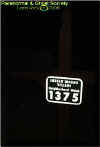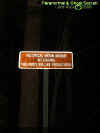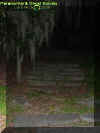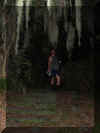|
|
||

Located in a very wealthy housing subdivision is a place called Indian Mound Village. The name came to be when at the end of the streets dead end is a giant shell mound. I have done some research and there is supposed burials that have taken place within the mound. Some shells contain artifacts and some contain bones. The mound sits in a little cove on the St. Johns River most of the native Americans built there mounds near water or rather this river. Proof of that is true based on how many investigations we have done in the last 2 years in FL that were other mounds in the area. This is not an easy place to find its preserved and well hidden. Its not in a state park or on a hiking trail. I mean the back yard to the mound is someone's house. Nearby is a dock and boathouse which they seem to be running it like a club of sorts with a swimming pool. This mound perhaps is not like others in the area in the fact that rumor has it its not a Timucuan Mound but rather it might be Creek, Black or Cherokee in nature which in basic terms means Seminoles who heavily inhabited this area. Back about a century ago many people were finding artifacts near this mound such as pottery, weapons etc most of them have been found by tourist, boaters, and explorers not much remains technically but this mound to serve as a land park. The mound was first discovered by a Dutch Immigrant named John Gerard William De Brahm in the 1760s. He was surveying the land and marked this mound. In 1844 Arthur Ginn who was an early state Senator and riverboat Captain took advantage of the fertile soil in this area and used the crushed shells to plant orange groves. It was recognized as the first commercial citrus grove in Mosquito County. Later it was named to Orange County then it was split into Seminole county where this mound is today. Assuming crushed shell was used there had to be more then one mound in the area perhaps this one we investigated is the only one left or in tact today in the area. They called this Indian Mound Ginn's Grove until his son-in-law Algernon Speer renamed it Speer's Landing. So to my readers do you see now the connection between Speer Park and this place? The material used to plant a grove in Speer Park came from this location which is a few miles up the road. There were many writings about early explorations in this area that revealed facts about important relics which had disappeared such as beads, earthenware vessels, and pyramids seen near the water as today we call the shell middens. In 1893 it was written that items expected to be found here were missing and that two trenches filled with human bones and seven skulls were found in the center of the mound. Also found here were pottery fragments and fossilized mammoth molars which were similar findings of Army officers during the Seminole Wars while widening old animal trails in the area to carry military wagons. So not only did the Indians roam this area but at one time the great wooly mammoth. The Speer estate which was located near the Indian mound was later purchased by Dr. A.C. Caldrell and J.N. Whitner. Later in 1926 plans were drawn up for 100 home sites to be built in this area at the Davey-Winston Organization Inc's Indian Mound Village. All 100 were not built cause the housing boom ended in the 1920s however most of them that were built still remain near the mound today and hence I bring you this special mystical historical place. Today the mound remaining has stone stairs built into the mound and many trees with moss grow at the top of the mound. Its a real cozy place but nonetheless it was a heavily used site by the Indians thus making a place of energy. At one time this mound was twice the size it is now but amateur collectors and Speer had downsized it by half.
© By
Lord Rick
|
||
|
|
|
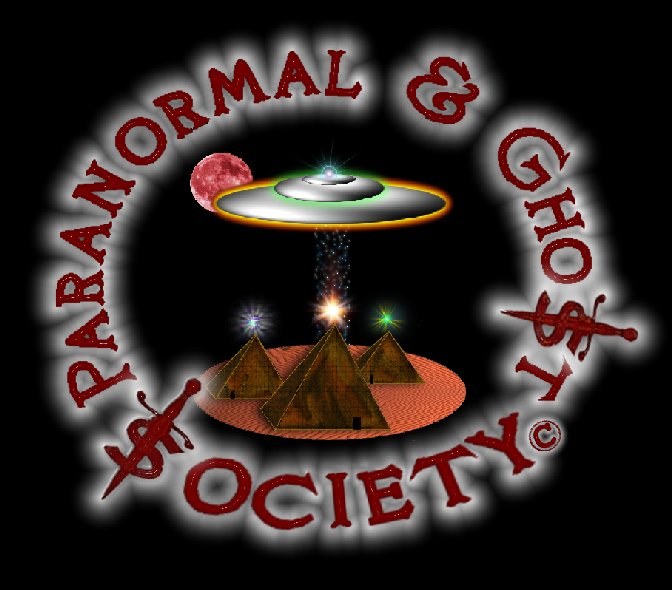
.gif)


